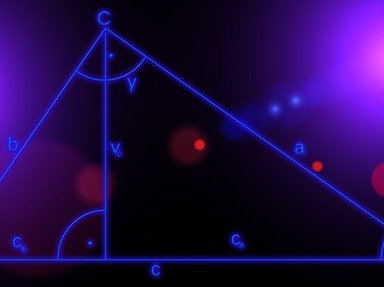Quiz Answer Key and Fun Facts
1. Which of the following formulas do we use to determine the area of a triangle?
2. What is the sum of the interior angles of a triangle?
3. Which theorem states that the square of the hypotenuse is equal to the sum of the squares of the legs?
4. What is the formula for the circumference of a circle?
5. Which formula is used to find the area of a circle?
6. The diagonals of a rectangle are always:
7. What is the sum of the interior angles of a quadrilateral?
8. Which type of triangle has three sides of equal length?
9. Which solid has six quadrilateral faces (examples include rectangular prisms, parallelepipeds, and cubes)?
10. What is the volume formula for a rectangular prism?
Source: Author
JJHorner
This quiz was reviewed by FunTrivia editor
rossian before going online.
Any errors found in FunTrivia content are routinely corrected through our feedback system.
